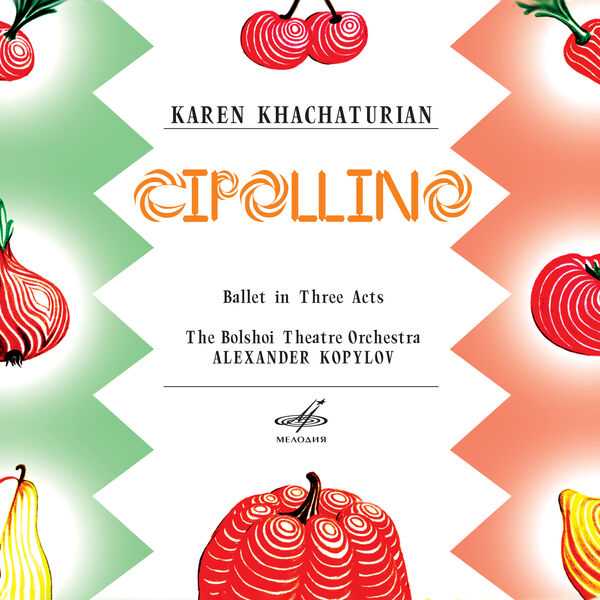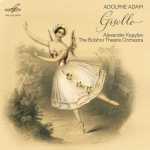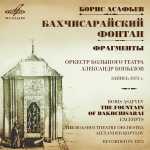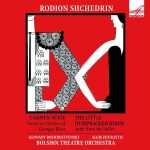
Composer: Karen Khachaturian
Orchestra: Bolshoi Theatre Orchestra
Conductor: Alexander Kopylov
Number of Discs: 2
Format: FLAC (tracks)
Label: Melodiya
Catalogue: MEL CD 1001628
Release: 1977/2009
Size: 450 MB
Recovery: +3%
Scan: cover
Cipollino
CD 01
Act I
01. Scene 1: Everybody’s Dance
02. Scene 1: Cipollino’s Entrance and Dance
03. Scene 1: Pumpkin’s Dance
04. Scene 1: The Policemen and Tomato’s Dance
05. Scene 1: Prince Lemon’s March
06. Scene 1: Protest of People, Threats of the Guards
07. Scene 1: Cipollino’s Monologue
08. Scene 1: Admission of the Old Chippolone
09. Scene 1: Cipollino’s Despair
10. Scene 2: Cipollino Feels Sorrow For His Father
11. Scene 2: Construction of the Pumpkin’s House
12. Scene 2: Radish Dance I
13. Scene 2: Entry of the Tomato and Two Guards – Encounter of the Tomato and Cipollino Dance of Cipollino – Tomato and Guards
14. Scene 2: Dance of Joy – Small Lemons Appearing
15. Scene 2: Radish Dance II
16. Scene 2: Cipollino and Radish
Act II
17. Scene 2: The Castle of Countesses Cherry
18. Scene 3: The Little Cherry’s Dance
19. Scene 3: Scene with Flowers
20. Scene 3: Variations of Magnolia and the Flowers
21. Scene 3: Lesson of Dance
22. Scene 3: Dance of Cipollino
23. Scene 3: Everybody’s Dance
24. Scene 3: Scene Near the Basement
25. Scene 3: Pursuit The Key Held by Little Cherry
CD 02
Act II
01. Scene 4: The Ball at the Cherries Countesses’ Castle
02. Scene 4: Dance of Prince Lemon
03. Scene 4: Dance of Cherries Countesses
04. Scene 4: The Little Cherry’s Dance
05. Scene 4: Dance of the Guests, Liberation
Act III
06. Scene 5: Pursuit and Recapture of Cipollinos
07. Scene 6: Appearance of Magnolia and Little Cherry
08. Scene 6: Magnolia and Little Cherry
09. Scene 6: Variation of the Guard
10. Scene 6: Magnolia Dance
11. Scene 6: Liberation of Cipollino Meeting with Friends
12. Scene 7: Appearance of Prince Lemon with Guards
13. Scene 7: Order of the Prince Lemon Shot
14. Scene 7: Everybody’s Dance
15. Scene 7: Appearance of Pumpkin
16. Scene 7: Construction of the Pumpkin’s House
The courageous rescuer of the fairy town, cheerful boy Cipollino by name (cipollino in Italian means “onion”) caused many happy feelings to his “parents”. The Italian writer Gianni Rodari, the creator of the character, tried to win public recognition for a long time without success. However, the genres he worked in were not treated seriously on the part of critics. It became a greater surprise for Italians when in 1970 their compatriot won Hans Christian Andersen International prize. The cause of that happy occurrence was that his fairy tales were published in millions of copies. The first place was taken by such tales as “Cipollino’s Adventures”, “The Voyage of the Blue Arrow”, “and Gielsomino in the Country of Liars”. Rodari’s stories evoked a special response in the Soviet Union. There he obtained recognition and fame that he was deprived of in his native country.
At the beginning of the 60-ies the story of the courageous Cipollino attracted attention of Soviet animators. Karen Khachaturian, a composer of Moscow School, was invited to create music to the cartoon film. His father Suren Khachaturian was the art director of the MAAT (Moscow Art Academic Theatre) first studio; his uncle was Aram Khachaturian, the author of famous ballets “Spartacus” and “Gayane”. Karen had already had much experience in the sphere of composing music to films. His music themes were performed in the cartoon films such as “When New Year trees are lighted up”, “Magic Treasure”, “The Brave Man’s Heart”, “Yellow Stork”, “Norwegian Little Shepherd” and “Unusual Match”. According to the composer’s words the fairy tale charmed him so much that the main characters stirred his imagination even when the film was released in 1961.
Music to the dramas and more than 40 films is only one of the sides of Karen Khachaturian’s talent. He is the author of two national anthems of African republics – Zanzibar and Somali. He was a pupil of Shebalin, Shostakovich and Myaskovsky, and though he did not create many pieces in classical genre there are several genuine masterpieces such as Sonata for violin and piano, String quartet, Second Symphony, Sonata for cello and piano. This rank can be continued with two ballets “Cipollino” (1974) and “Snow White”. “I could not forget cheerful Cipollino, tender Red Radish, noble Little Cherry, malicious and clamorous Lemon… – confessed the composer. – Moreover, now, for some reason I can visualize every character dancing. That was how the idea of the ballet was born. Music to a short cartoon film is one thing and it’s quite another matter to create music to a full ballet. In a film narration helps music; in a ballet music must speak by itself”. Khachaturian took the musical characteristics of the cartoon film as the basis and created sincere and charming music of a three act ballet.
Since its first night the ballet was doomed to a brilliant lot. At first in Kiev, then in Ashkhabad and at last on the stage of the Kremlin Palace of Congress the performances of “Cipollino” got passionate response of the audience of various social status and age. Its world first night (production and choreography of Heinrich Mayorov) on the stage of Kiev theatre named after Taras Shevchenko won a State Prize. It was Mayorov (now he works a chief choreographer in Children’s Musical Natalia Sats’ Theatre) with whose assistance the ballet was staged in the Bolshoi Theatre; ever since the ballet is performed under the leadership of Alexander Kopylov. The ballet dancers of the Bolshoi call “Cipollino” “Spartacus for children” for its virtuosity of choreography. Very soon the ballet became the centerpiece of other Russian theatres. The zest of production of “Cipollino” in Natalia Sats’ Theatre is the introduction of actors’ singing into dancing. Such synthesis has become possible due to melodious and rhythmically simple musical motifs of Khachaturian’s music.



